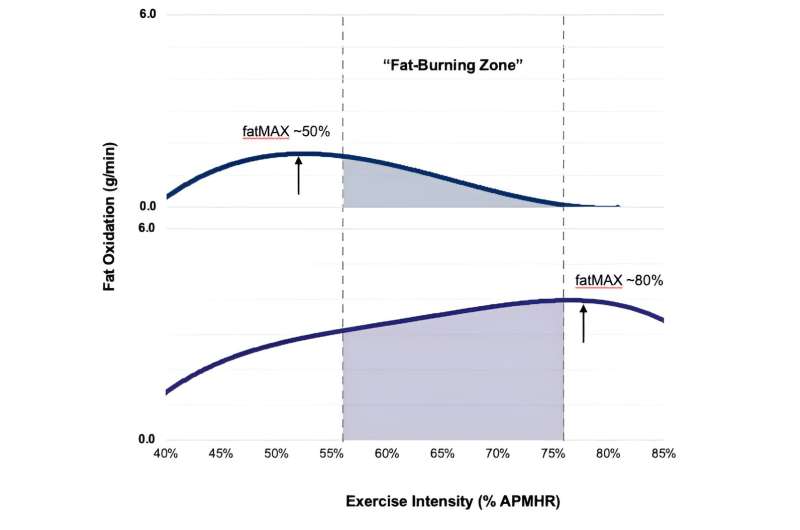This article has been reviewed according to Science X's editorial process and policies. Editors have highlighted the following attributes while ensuring the content's credibility:
fact-checked
trusted source
proofread
Study finds fat burning during exercise varies widely between individuals

The best heart rate for burning fat differs for each individual and often does not align with the "fat burning zone" on commercial exercise machines, Icahn School of Medicine at Mount Sinai researchers report.
Instead, the researchers said, clinical exercise testing—a diagnostic procedure to measure a person's physiological response to exercise—may be a more useful tool to help individuals achieve intended fat loss goals. The study, which used a machine learning-based modeling approach, was published online in Nutrition, Metabolism and Cardiovascular Disease. The paper is titled, "Discrepancy between predicted and measured exercise intensity for eliciting the maximal rate of lipid oxidation."
"People with a goal of weight or fat loss may be interested in exercising at the intensity which allows for the maximal rate of fat burning. Most commercial exercise machines offer a 'fat-burning zone' option, depending upon age, sex, and heart rate," says lead author Hannah Kittrell, Ph.D. candidate at Icahn Mount Sinai in the Augmented Intelligence in Medicine and Science laboratory. "However, the typically recommended fat-burning zone has not been validated, thus individuals may be exercising at intensities that are not aligned with their personalized weight loss goals."
The term FATmax is sometimes used to represent the exercise intensity and associated heart rate at which the body reaches its highest fat-burning rate during aerobic exercise. At this point, fat is a significant fuel source and therefore this intensity may be of interest to those seeking to optimize fat loss during workouts.
As part of the study, the researchers compared heart rate at FATmax, as measured during a clinical exercise test, to predicted heart rate at percentages of maximal effort within the typically recommended "fat-burning zone."
In a sample of 26 individuals, the researchers found that there was poor agreement between measured and predicted heart rate, with a mean difference of 23 beats per minute between the two measures. This suggests that general recommendations for a "fat-burning zone" may not provide accurate guidance.
Next, the researchers plan to study whether individuals who receive a more personalized exercise prescription demonstrate more weight and fat loss, as well as improvement of metabolic health markers that identify health risks like type 2 diabetes, obesity, and heart disease.
More information: Hannah D. Kittrell et al, Discrepancy between predicted and measured exercise intensity for eliciting the maximal rate of lipid oxidation, Nutrition, Metabolism and Cardiovascular Diseases (2023). DOI: 10.1016/j.numecd.2023.07.014





















